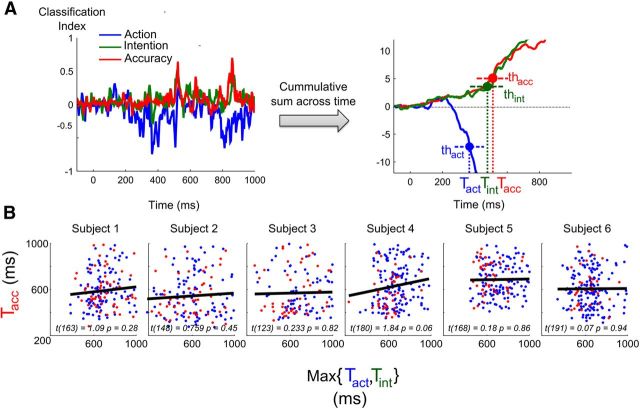Figure 7.
The timing of error detection correlates with the slowest of two signals for action and intention. A, Example of a single-trial computation of decoding time. To improve the signal-to-noise ratio, we computed the cumulative sum, across time, of the probability values obtained from each of the three decoders for actual response, required response, and accuracy. Threshold values for each decoder were defined, and the timing of threshold crossing for each time series was taken as an index of the time when this code first became available on this trial. Thus, three values were obtained for each trial (Tact, Tint, and Tacc), corresponding respectively to the time for threshold crossing of the actual response, the required response, and the accuracy decoder. B, Correlation results of the slowest (maximum) time index between Tint and Tact with the time index of error detection Tacc. Each dot corresponds to a single seen trial (red = errors, blue = correct). A positive correlation indicates that, as predicted, error information becomes available only once both action and intention codes have been computed.

